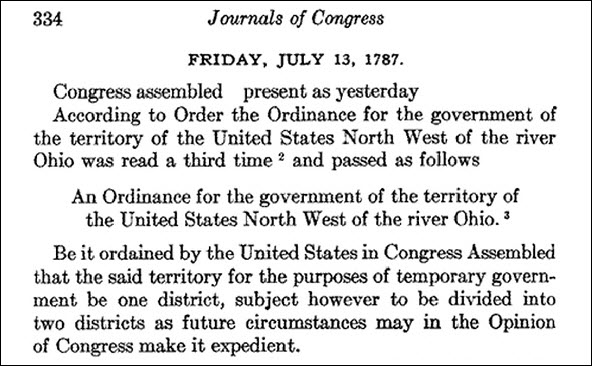… in Illinois, at least
We wouldn’t be genealogists if we didn’t study the past. And, for The Legal Genealogist, that means studying the laws of the past.
So… where do we begin?
Where does the law begin? In preparing for this Saturday’s 2018 Family History Conference of the Genealogical Society of Southern Illinois in Carterville, I’ve been looking at just that question … where the law begins in Illinois.
Which is a very long time before there was an Illinois.
Originally, of course, much of the middle of the North American continent was at least nominally under the control of the French.1 The British pretty much put an end to that in the French and Indian war,2 and then the Americans kicked out the British in the Revolution.3
But at that point much of the upper Midwest was claimed by eastern states, and it was necessary for the fledgling federal government to work out cessions of the land: New York in 1781; Virginia in 1784; Massachusetts in 1785; Connecticut in 1786.4
So you could count French law, except that nobody really was around to enforce it. Or British law, except most of the time the British were in control, the only British around were fighting the Americans.
And so, where Illinois law really begins, is with the birth of the Northwest Territory by way of what became known as the Northwest Ordinance.5

Passed by the Second Continental Congress on 13 July 1787, “An Ordinance for the government of the territory of the United States North West of the river Ohio” was a remarkable document.6 It provided for:
• Equal inheritance rights for sons and daughters.7
• A guarantee of freedom of religion.8
• A guarantee of trial by jury.9
• Encouragement for schools and “the means of education”.10
• A ban on slavery and involuntary servitude.11
Now the document wasn’t perfect, by any means. Yes, it banned slavery in the territory, but it also provided that “any person escaping into the same, from whom labor or service is lawfully claimed in any one of the original states, such fugitive may be lawfully reclaimed and conveyed to the person claiming his or her labor or service as aforesaid.”12
But for its time and its place it was remarkable, and set the tone for the laws to come.
And in a very real way, it’s where the law begins, in Illinois.
SOURCES
- “New France,” American History : From Pre-Columbian to the New Millennium, USHistory.org (http://www.ushistory.org/us/index.asp : accessed 9 Aug 2018). ↩
- Ibid., “The French and Indian War.” ↩
- You don’t really need a cite for that, y’know. You only need to cite things that aren’t a matter of common knowledge. See “Standard 2 (Specificity),” Board for Certification of Genealogists, Genealogy Standards (Nashville : Ancestry, 2014), 6. ↩
- See generally Franklin K. Van Zandt, “Cessions by the States,” Boundaries of the United States and the Several States, Geological Survey Bulletin 1212 (Washington, D.C. : US Govt. Printing Office, 1966), 70-73. ↩
- “An Ordinance for the government of the territory of the United States North West of the river Ohio,” 34 Journals of Congress 334-343 (13 July 1787); digital images, “A Century of Lawmaking for a New Nation: U.S. Congressional Documents and Debates, 1774-1875,” Library of Congress, American Memory (https://memory.loc.gov/ammem/index.html : accessed 9 Aug 2018). ↩
- See the full text in Laws of the Territory Northwest of the River Ohio… (Northwest Territory : Cincinnati, 1833), 66-69; digital images, Google Books (https://books.google.com : accessed 9 Aug 2018). ↩
- Ibid., at 66. ↩
- Ibid., Article I at 68. ↩
- Ibid., Article II. ↩
- Ibid., Article III. ↩
- Ibid., Article VI at 69. ↩
- Ibid. ↩



As a native of Michigan, living in Illinois and trying to write about family history in Ohio and Wisconsin, I’m fascinated by the political history of the Northwest Ordinance and the formation of our states. (Many people in this part of the country don’t know how the land was acquired from the people who were here first.) The story of the founding of Ohio and the resulting territorial changes as the later states entered the union is very captivating.